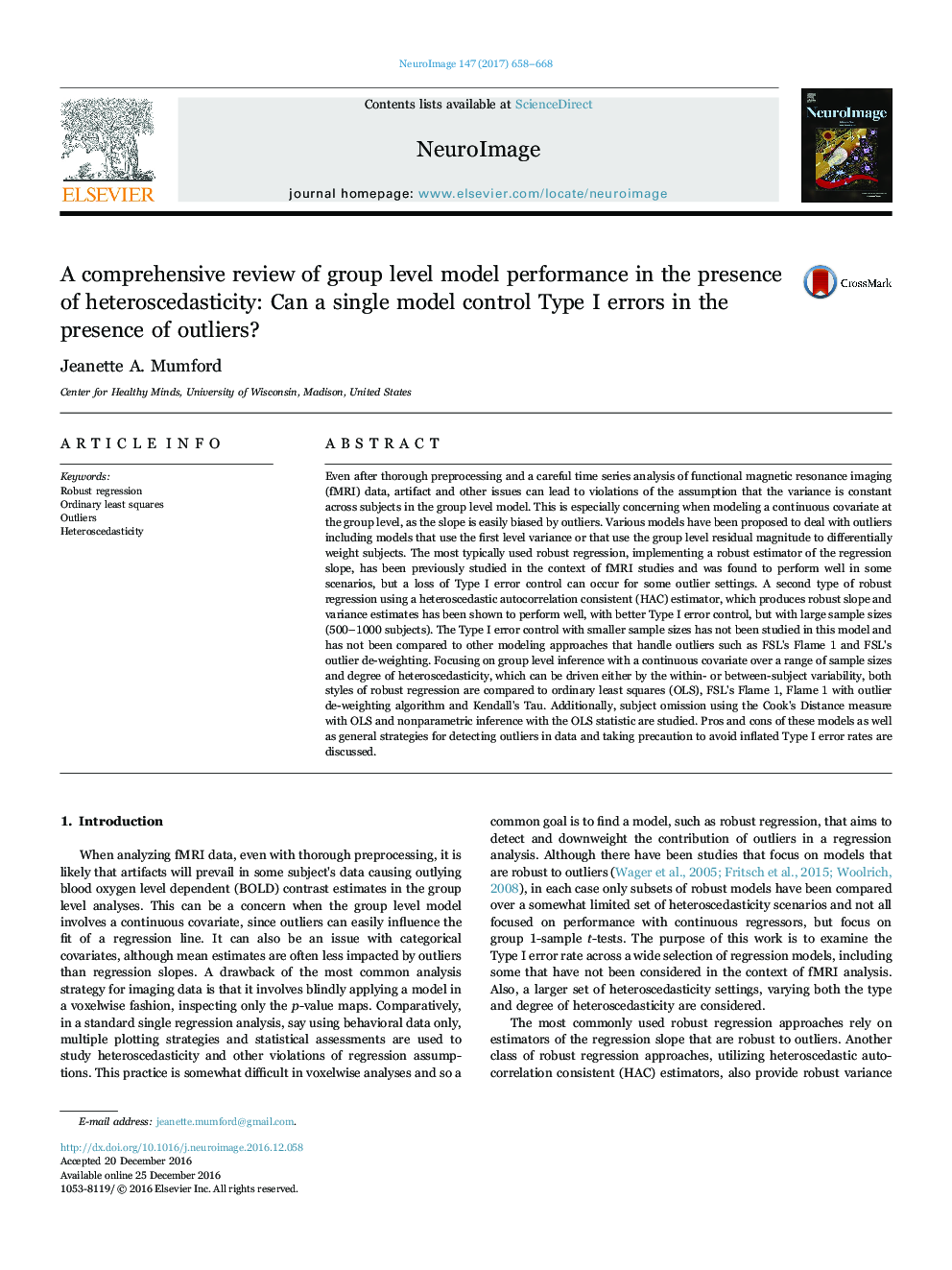| کد مقاله | کد نشریه | سال انتشار | مقاله انگلیسی | نسخه تمام متن |
|---|---|---|---|---|
| 5631534 | 1580863 | 2017 | 11 صفحه PDF | دانلود رایگان |

- In fMRI data analysis, outliers can inflate false positive rates and reduce power.
- We study a wide array of analysis approaches and heteroscedasticity settings.
- No model designed to deal with outliers performs perfectly.
- Visual inspection of data can help avoid the scenarios found to have invalid results.
Even after thorough preprocessing and a careful time series analysis of functional magnetic resonance imaging (fMRI) data, artifact and other issues can lead to violations of the assumption that the variance is constant across subjects in the group level model. This is especially concerning when modeling a continuous covariate at the group level, as the slope is easily biased by outliers. Various models have been proposed to deal with outliers including models that use the first level variance or that use the group level residual magnitude to differentially weight subjects. The most typically used robust regression, implementing a robust estimator of the regression slope, has been previously studied in the context of fMRI studies and was found to perform well in some scenarios, but a loss of Type I error control can occur for some outlier settings. A second type of robust regression using a heteroscedastic autocorrelation consistent (HAC) estimator, which produces robust slope and variance estimates has been shown to perform well, with better Type I error control, but with large sample sizes (500-1000 subjects). The Type I error control with smaller sample sizes has not been studied in this model and has not been compared to other modeling approaches that handle outliers such as FSL's Flame 1 and FSL's outlier de-weighting. Focusing on group level inference with a continuous covariate over a range of sample sizes and degree of heteroscedasticity, which can be driven either by the within- or between-subject variability, both styles of robust regression are compared to ordinary least squares (OLS), FSL's Flame 1, Flame 1 with outlier de-weighting algorithm and Kendall's Tau. Additionally, subject omission using the Cook's Distance measure with OLS and nonparametric inference with the OLS statistic are studied. Pros and cons of these models as well as general strategies for detecting outliers in data and taking precaution to avoid inflated Type I error rates are discussed.
Journal: NeuroImage - Volume 147, 15 February 2017, Pages 658-668